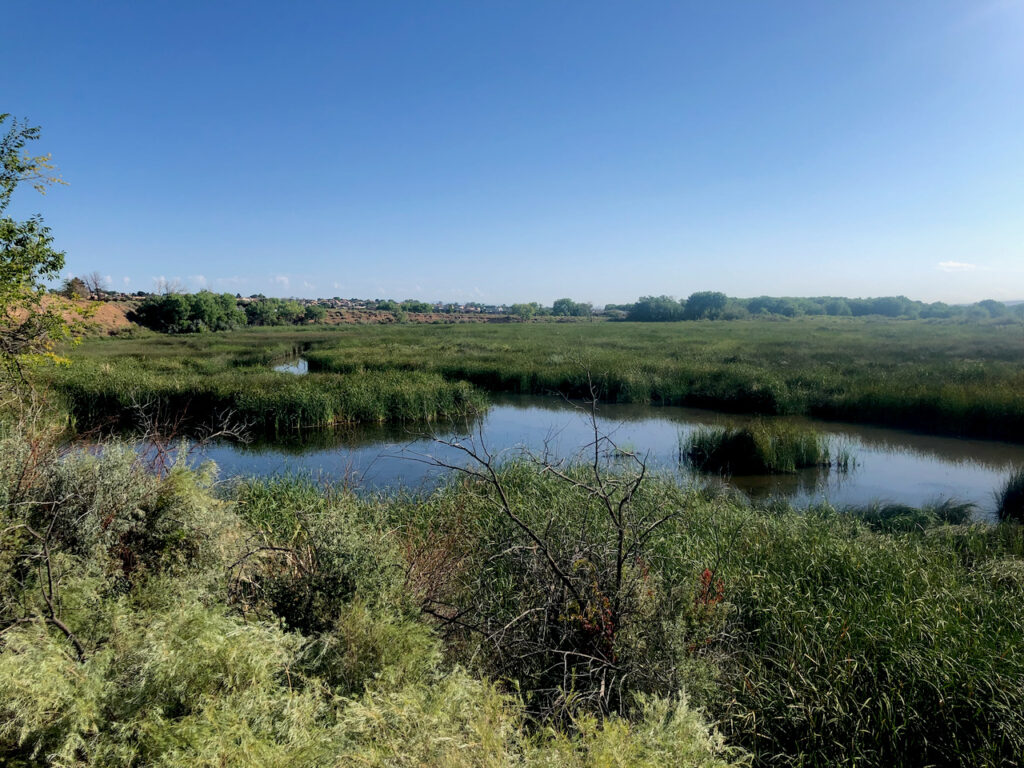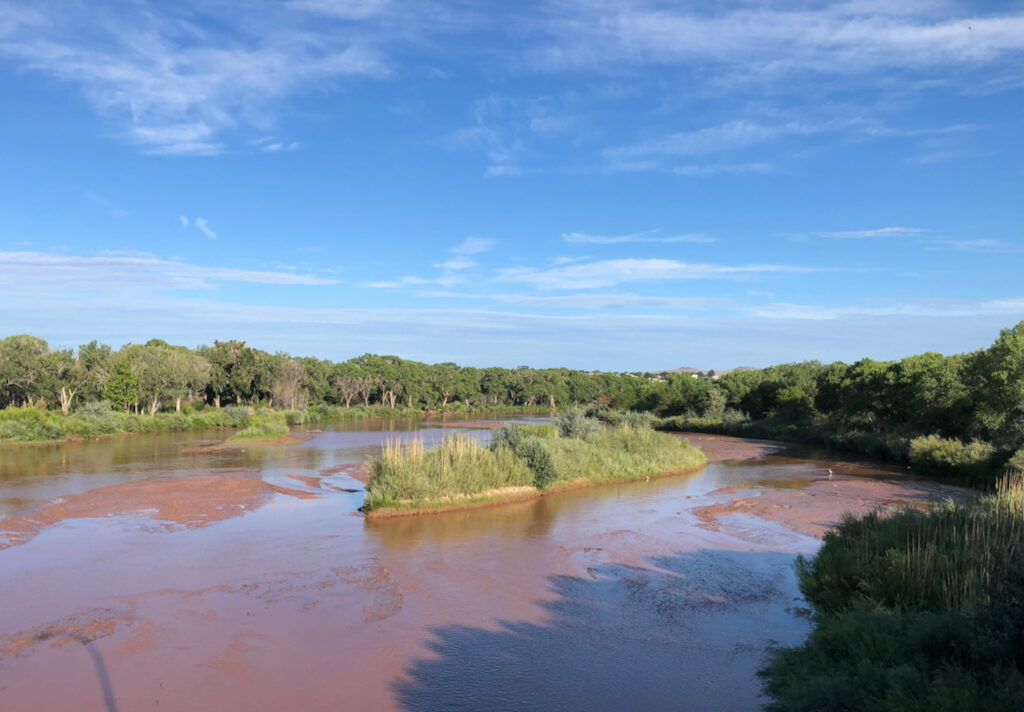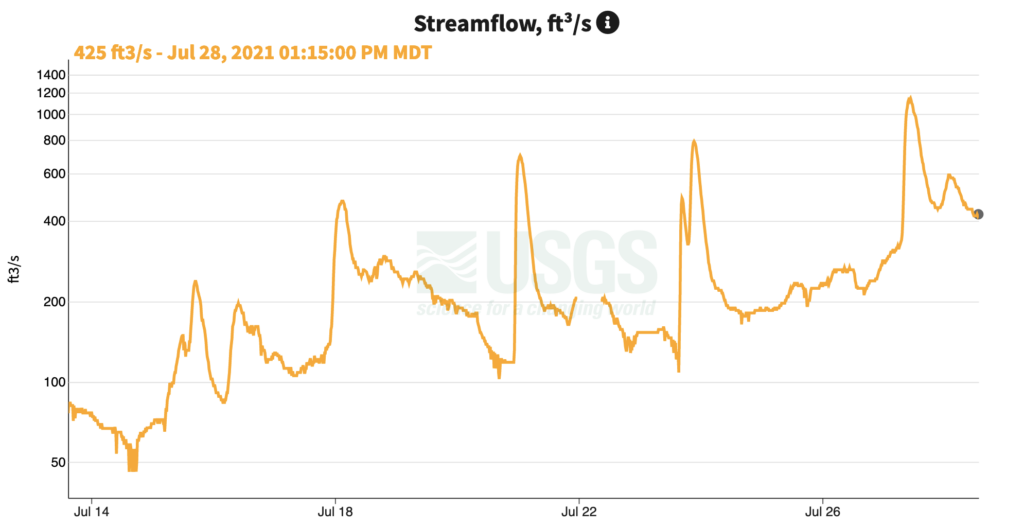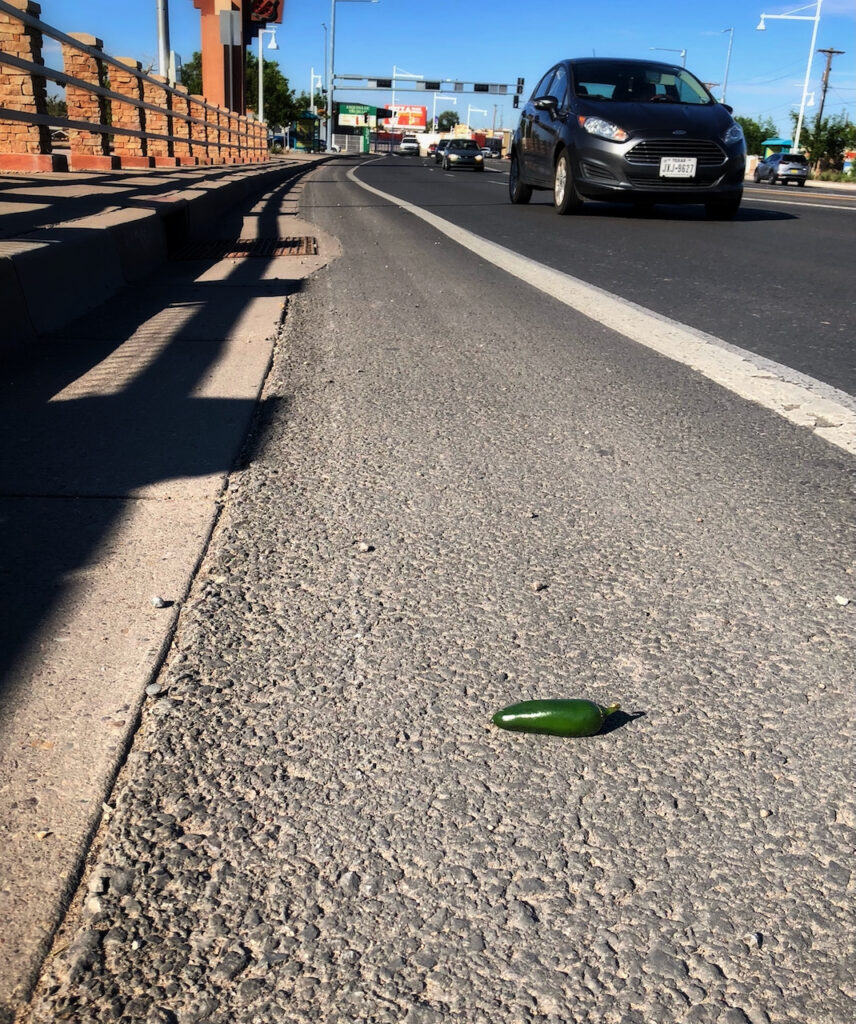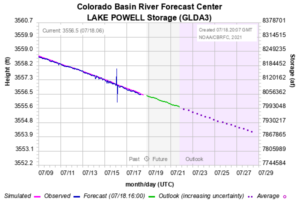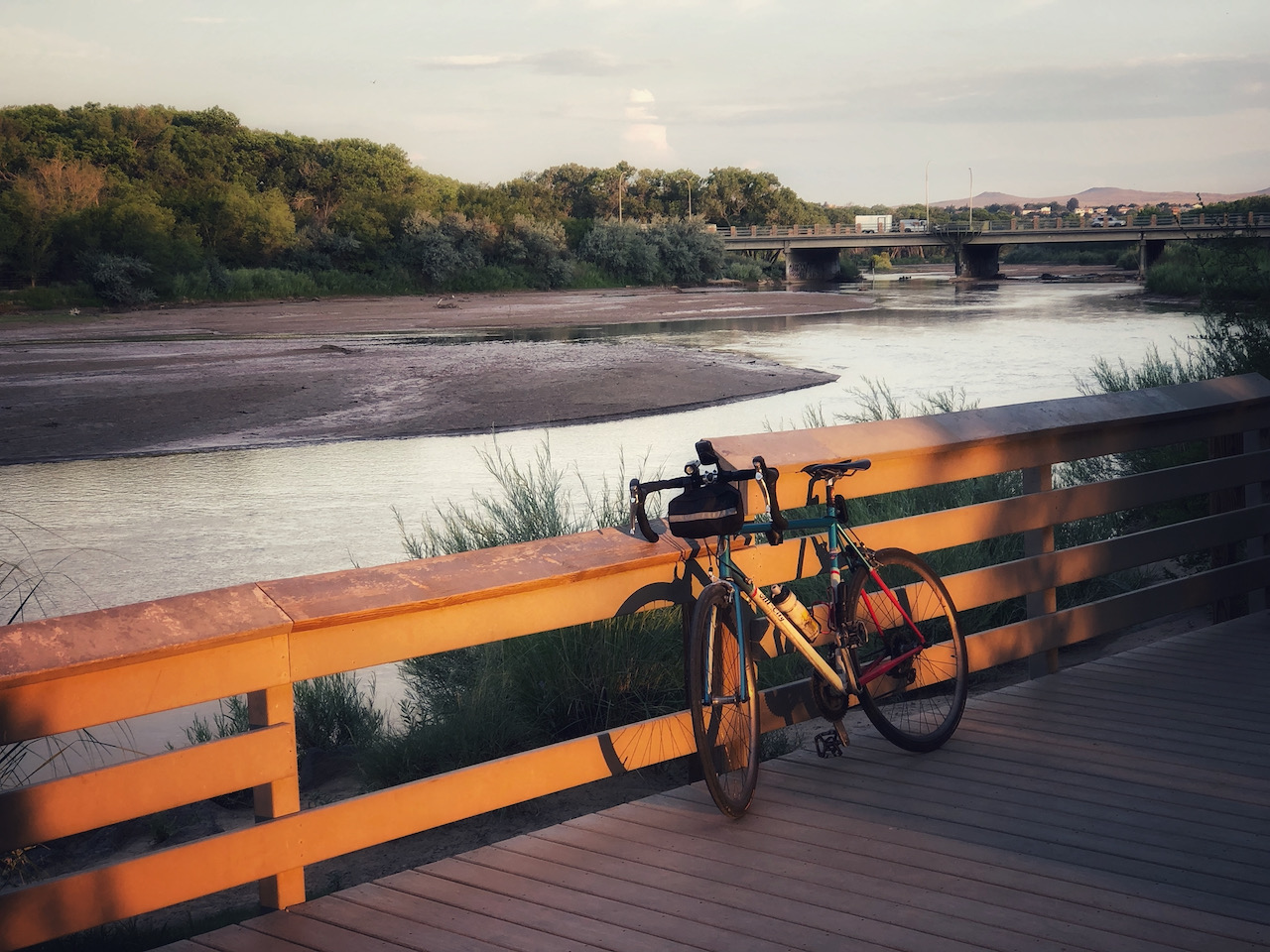
Dawn on a dwindling Rio Grande. Albuquerque, New Mexico, July 14, 2021
Between the wildfire smoke and two important meetings for which I am unprepared, I intended to stick to a quick indoor Zwift bike ride this morning before getting on with my day. Until I checked the gauges.
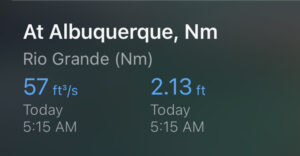
Measuring a shrinking river
57 cubic feet per second.
It’s a morning ritual, the little iPhone app while I’m curled up in my comfy chair with a bowl of Grape Nuts and the first cup of coffee.
57 cfs at Albuquerque’s Central Avenue Bridge is something entirely new to me in my 30-plus year relationship with the Rio Grande. 100 cfs used to be my mental milestone for “going dry”, and in my years of watching the river it’s rarely gone there, and never this early in the summer.
It was still dark, but I’d plugged in my bike lights to recharge last night, so I threw on bike shorts and a shirt, filled a water bottle, and tore down to the river.
I rode fast to try to catch the morning light. (I am old, but it is mostly downhill.)
The shortest route from my house to the river crosses the old abandoned Albuquerque Acequia, which used to irrigate fields north and east of Old Town back as far as the 1700s. Farther west the Alameda Drain, another canal that’s part groundwater drainage, part water supply for folks to the south, was still running.
57 cfs at the Central Avenue Bridge didn’t look much different than 76 cfs last Sunday. You can see the old bridge pilings on the west bank, poking up like sentinels of climate change.

Rio Grande at Central Avenue, Albuquerque, looking west. 57 cfs. July 14, 2021
Around the river’s west side, the Middle Rio Grande Conservancy District is still diverting water through the Atrisco Siphon into the Arenal Main. The gauge readings are down this morning, so I don’t know the number, but I’m guessing more water coming through the siphon than down the river’s main channel.
The egrets hanging out looking for breakfast had chosen canal over river.
The latest note from the river managers this morning suggests the river’s still continuous through the Albuquerque reach, but barely. It’s thinning down near the Albuquerque sewage treatment plant outfall, but doesn’t appear to have broken yet. Dewpoints are high this morning. Maybe it will rain.
On the way home, I swung north through the Duranes neighborhood to check out the Duranes Ditch. It’s one of the old ones, and per a friend in the neighborhood it had nearly gone dry yesterday, but it was running again today at what the gauges suggest is maybe 12 cfs. Such a tiny number, but looming larger right now.
The Duranes, twisty across the valley floor, has been in its present location long enough that its role on our landscape is as much neighborhood creek as it is irrigation canal. We have replaced the natural flood plain with a distributional system that has created a novel ecosystem, rich and diverse and culturally complex, as it spreads across the valley floor, twining through neighborhoods of old farms and newer subdivisions, tree-lined and rich.
I’m not sure if I’ll be sadder when the Duranes and Griegos, my other favorite ditch, go dry, or if I’ll be sadder when the river goes dry.
It’s all just sad.
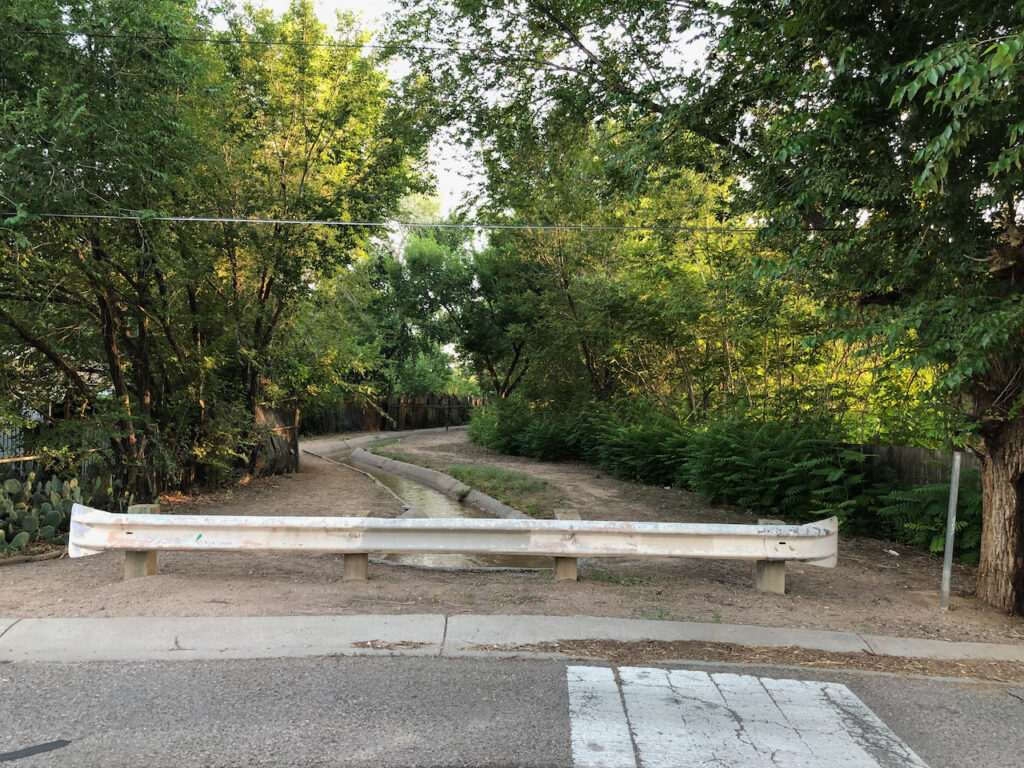
Duranes Ditch, Duranes, NM (OK, technically Albuquerque?), July 14, 2021. Maybe 12cfs?


